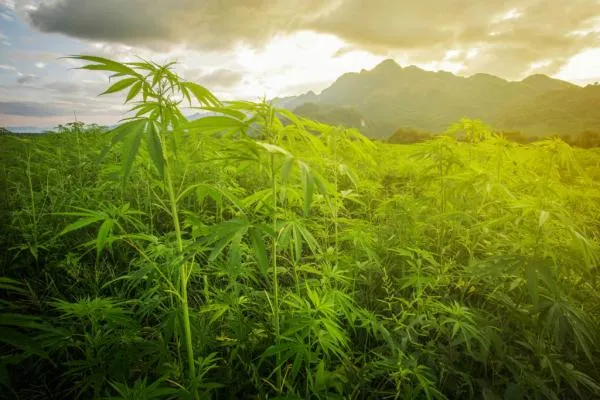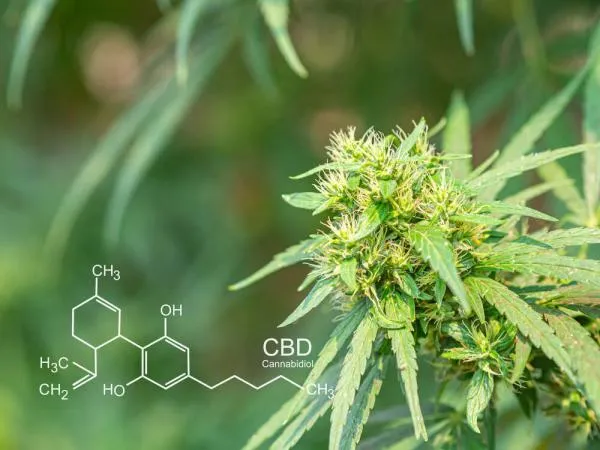- Introduction
- What are Trichomes, and What Do They Do?
- What Percentage of THC is in Trichomes?
- Where is THC found on the Cannabis Plant?
- What do trichomes look like when they are ready to harvest?
- What color trichomes have the most THC?
- When does trichome production stop?
- Can you increase trichome production?
- What is made with trichomes?
- Summary
Introduction
Trichomes. While you very well may have never heard the word, or seen it printed, we are pretty sure you have witnessed their glory if you have ended up here. They are the tiny, hairlike crystalline growths that cover the surface of the flowers and sugar leaves of a cannabis plant, and are where all the goodness is stored.
So, what exactly are trichomes? What is stored inside of them? And how do you guarantee the maximum amounts of trichomes on your own crop?
Stick around, as we dive head first into the wonderful world of trichomes, and all that they contain!
What are Trichomes, and What Do They Do?
A very good question, and a great place for us to start. Let's get the science-y bit out of the way first:
"Trichomes are epidermal outgrowths of various types that occur in all vegetative organs of plants, including leaves, stems, flowers, fruits, and seeds. They vary greatly in morphology (shape and size), chemical composition, and function."
Geez, science-y indeed. In other words, they are tiny growths that come out of the surface of the plant, and can be found pretty much everywhere on it - although the vast majority are located on the flowers (the buds) and the sugar leaves that grow around the flowering sites.
The functions of trichomes are just as varied as their morphology. They can play a part in defence against pests and pathogens, help with thermoregulation, help keep the plant properly hydrated, and produce and store secondary metabolites (more on these later).
In the context of cannabis, however, trichomes serve two main purposes. Firstly, they help to protect the plant from predators such as insects, as well as harsh weather conditions. The thick layer of resin produced by the trichomes acts as a barrier, deterring attacks from the wide range of nasties that just love to call our favorite crop home, destroying them in the process.
The second, and most important function of trichomes in cannabis plants, is to produce and store cannabinoids. Cannabinoids (think THC, CBD, and CBN) are the active compounds in cannabis that interact with our body's endocannabinoid system, resulting in the wide range of effects that we experience when consuming weed. The vast majority of cannabinoids are produced inside the trichomes, and it is these that we are interested in when talking about the potency of a particular strain or plant.

What Percentage of THC is in Trichomes?
Well, that really depends on the strain. Some cultivars offer a high percentage of THC like our Gorilla Glue Fast Flowering Cannabis Seeds, while others produce so little that they are classed as totally non-psychoactive while still offering medicinal benefits.
But, in terms of how much of the total THC that a plant produces, it is estimated that excess of 90% is found in the trichomes.
Where is THC found on the Cannabis Plant?
Well, we have already talked about cannabinoid production inside the trichomes, but where are the trichomes found? The vast majority are located on the flowers (the buds) and the sugar leaves that grow around the flowering sites, with some also present on the stem. A very small percentage will also be found on other areas of the plant, but the percentages are so tiny that most cultivators won't ever notice them.
What do trichomes look like when they are ready to harvest?
Trichomes can come in a range of sizes, shapes, and colors depending on the stage of growth the plant is in. There are 3 mian types of trichomes that are found on cannabis plants:
- Bulbous: These are the smallest type of trichome, and can be found all over the plant. They are usually clear and don't contain a lot of cannabinoids.
- Capitate sessile: These are slightly larger than bulbous trichomes, and also have a clear or translucent appearance. They are found all over the plant but are denser on the sugar leaves and flowers. These trichomes contain a moderate amount of cannabinoids.
- Capitate-stalked: These are the largest type of trichome, and can grow up to 0.5mm in width. They are found mostly on the flowers and sugar leaves and contain the highest concentration of cannabinoids.

As the plant matures, these trichomes will slowly change in appearance. In the Early stage of final flowering, almost all of the crystals will have a clear aspect. As the flowering cycle continues they will slowly turn from clear to cloudy, and finally settle at an amber color. Cultivators use this progression to determine when to harvest their crop. Its widely accepted that a plant is ready for harvest when the trichomes are between 2/3 cloudy 1/3 amber and half cloudy and half amber.
The earlier the crop is harvested, the more Sativa-like effect the plant will produce. When the crop is picked early with more clear trichomes, the high will usually be more cerebral and uplifting. As the plant matures and the trichomes turn more amber, the effect will become more Indica-like, with heavier sedative qualities.

What color trichomes have the most THC?
Amber trichomes contain the highest levels of THC, which is thought to be one of the reasons why a plant with more amber trichomes produces a heavier psychotropic effect. If a plant is left to mature even further, the trichomes will turn an even darker color - almost brown. At this point, some of the THC will be converted into CBD. So if you are looking to get the strongest THC buds keep this in mind.
When does trichome production stop?
As trichomes play a huge role in the self-preservation of the plant, it's unsurprising that the production of trichomes continues all the way up until the plant is harvested. However, there is a sharp decline in cannabinoid production in the last 2 weeks of flowering. So, if you want to maximize your trichome yield make sure you harvest at the right time!
Now that we know all about trichomes, let's take a look at how to increase their production...
Can you increase trichome production?
To give you the short answer, 100% you can! There are a dozens of products on the market that are proven to vastly improve not only the number of trichomes produced but also the quality of the trichomes themselves.
How about the long answer? Let's explore the 3 main ways that you can increase your trichome production and get some danker-than-dank buds.
Here are some of the most popular ways to increase trichome production:
- Use high-quality genetics: This is the number one way to ensure that you have a plant that produces a high density of trichomes. If you're growing from seed, make sure to do your research and choose a strain that has a proven genetic linage of producing large amounts of quality resin.
- Use the right nutrients: Just like any other living thing, plants need the right nutrients to grow and thrive. The importance of supplying your crop with the right balance of nutrients at the right time can not be overstated. When it comes to trichome production, using a nutrient mix that is rich in phosphorus and potassium. This will give your plants the best chance of pumping out an abundance of resin.
- Keep your plants healthy: This one seems like a no-brainer, but making sure your plants are as healthy as possible is crucial to maximizing trichome production. Avoiding any form of stress such as heat stress, nutrient deficiencies, pests, mold, and disease will go a long way in guaranteeing that your crop is able to produce large quantities of high-quality trichomes. If you want your plant to resemble a snow covered Christmas tree, you better take good care of her.
- Use high quality additives: There are a number of additives on the market that can be used to increase trichome production. These products usually work by providing the plant with additional nutrients or by stimulating growth hormones. While there is no guarantee that using these products will result in larger yields, they are definitely worth trying if you're looking to give your crop that extra boost. There is a huge range to choose from and certain growers will scream the benefits of certain products, but as long as you go with one from a reputable company then you should be all good.
Certain forms of plant training techniques may also help with boosting trichome production. Things like topping, super cropping, and LST (low-stress training) can all lead to an increase in sticky-ickyness.
What is made with trichomes?

If you haven’t figured it out by now, the oil and resin from cannabis trichomes are vital for another reason. Weed concentrates. Advancing technology and processes now allow the isolation of trichomes, through extraction to harness their potent powers. Extracts deliver the purest tastes, aromas, and the highest levels of cannabinoids on the market today. Making them widely popular with medical and recreational users alike, for elevated experiences.
Here is a quick review of the types of concentrates or weed products that are made with trichomes -
Concentrates
Through BHO (butane hash oil) or CO2 extraction processes, the cannabinoids, terpenes and flavonoids are removed from plant material. Varying methods produce different consistencies like shatter, wax, budder, etc.
Kief
The collection of crystal trichomes at the bottom of your grinder, produces what’s called kief. Kief is the light and fluffy frosty coating that falls through the mesh. Leaving you a potent powder that can be smoked or used to make edibles.
Hash
When trichomes or kief are pressed with some form of heat, hash is made. Hash, can also be used for smoking and edibles, or vaping, and dabbing.
Tinctures
Trichomes are also essential when manufacturing alcohol or oil based tinctures. To do so, plants are soaked in the liquid which strips the trichomes from the flower material.
If you’d rather save costs and make trichome heavy concentrates yourself, you can do so. There are many at-home methods to concoct your own tinctures, hash, and even certain concentrates. Depending on your experience, or tools, will determine which type is easiest for you. For instance, to make hash, you’ll only need a hair straightener and parchment paper, while BHO methods will require butane, and high heat sources.
Summary
So there you have it, everything you need to know about trichomes. We hope that this article has been helpful and that you now have a better understanding of these amazing little structures. All that there is left to do now is get your hands dirty, and grow the best weed possible!
post updated 25th July 2022 by OG Wells








